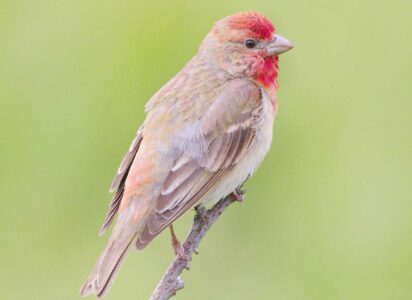The common Rosefinch is also known as scarlet rosefinch which belongs to the family Fringillidae under order Passeriformes. It is found in Asia and Europe. In winter season, they are observed in southern Iran, South-east China, Bangladesh, India, Myanmar and Indonesia.
In summer, they are found in woodland, forest edges very near to rivers while in winter, they prefer to live in gardens and wetlands.
Systematic Position
- Phylum:Chordata
- Subphylum: Vertebrata
- Class: Aves
- Order: Passeriformes
- Family: Fringillidae
- Genus: Carpodacus
- Species:Carpodacus erythrinus
Habit and Habitat
Common Roseinch prefer to live in new trees. They make a living by eating wild figs, flower buds, berry fruits, seeds, herbs, pulses, etc.
They also eat the sweetness of the flowers of the flowering plants of the Butea genus. They help in pollination by consuming flower sap. They call out Tuiee Tuiee.
You might also Read: Best Bird Cage
Physical Description
Common Rosefinch can grow up to 15 cm (5,9 inch) in length. It is slightly larger than the house sparrow. The body color of this bird is brown. Male birds, on the other hand, are also brown.

The beaks of both males and females are heavy, triangular and conical. Slightly bifurcated tails are observed.
The fully mature male has rosy-carmine head, rump and breast. They have dark brown wings with two unclear bars while the belly is white.
In case of female and young males, dorsal side of the body is dull-color and yellowish-brown while the rump is brighter and top of the head is grey.
Breeding of Common Rosefinch
Common Rosefinch breeds in September to November. They breed in the Himalayan foothills at an altitude of about 3000 meters.
They make nests with grass, roots and fur in wild rose trees or similar shrubs. They usually build nests at a height of 1-2 m from the ground. The female lays 3-4 azure eggs in the nest.
Light black and red spots are observed between the eggs. Both males and females guard the eggs and make incubation up to hatching.
You might also read: Spotted Crake : Porzana porzan
